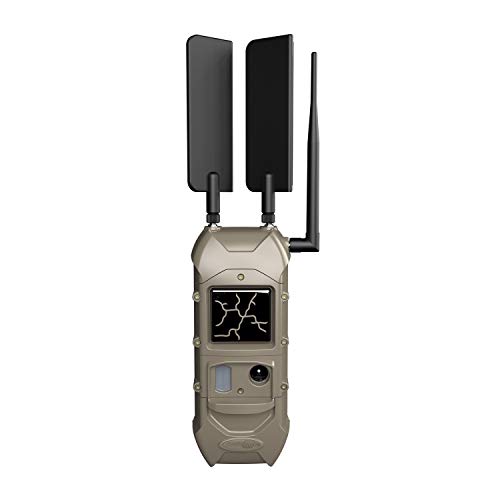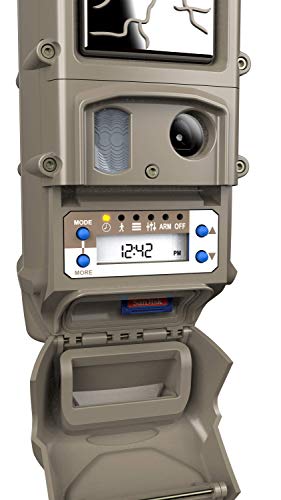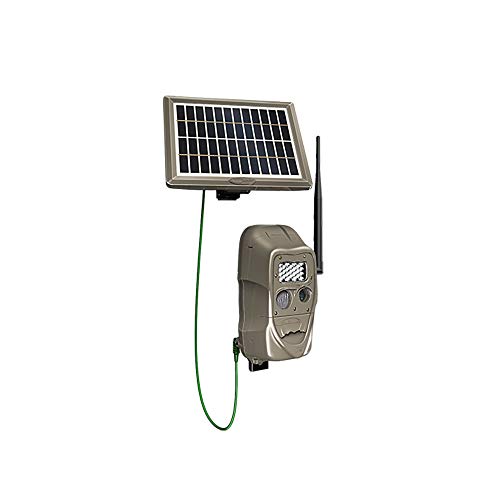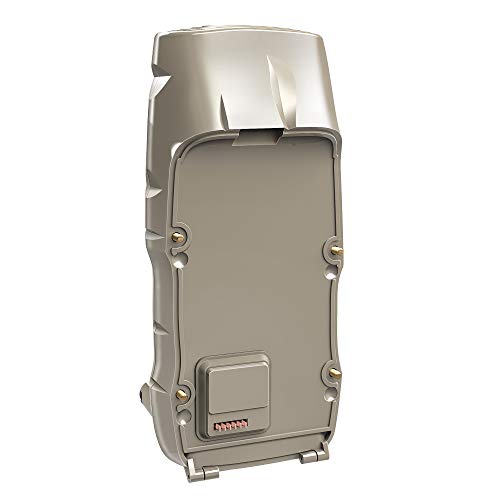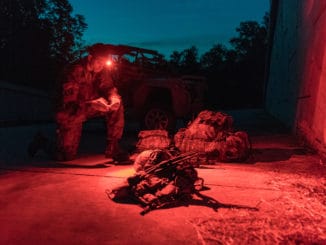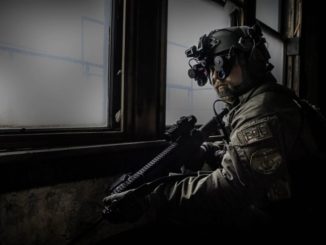Game trail cameras have come a long way – there’s a ton of new, high-tech options you can get for cheap.
We’ll take a look at those here.
Here’s the gear we are going to review.
Basic Features of Trail Cameras
Here’s some things that are “table stakes” in trail cameras today.
It’s gotta have night vision – of course.
The way this works in trail cameras is what is known as digital night vision – an invisible infrared (IR) light is projected from an LED – and the digital CCD of the camera can see the reflected light.
This is “active” night vision rather than “passive” night vision – but that’s OK. The animals don’t know the difference.
Also – these use Infrared (IR) light – but this is NOT thermal vision – that’s a very expensive technology.
Secondly, the unit should be capable of high resolution still photos. The clarify of the photos will be expressed in MP or Megapixels. Higher is better.
But, with that in mind – digital cameras love light. Photos in low light are typically rough and grainy and won’t capture the best image – despite the amount of megapixels.
Some cameras do video – but that’s a battery hog and it takes up storage space.
For finding game you can get by with photos.
But, if you want video look for HD video.
The camera should be able to produce HD (High Definition) video in either 720 pixels (720p) or “full HD” of 1920×1080 pixels (aka 1080p).
There might be a 4K trail camera soon – but honestly that is overkill. The lighting isn’t usually going to be good enough to really take advantage of that. 4K is expensive and battery life will take a hit as well.
Lastly, trail cameras need a fast trigger speed. They’ve got to snap the photo or take the video as quickly as possible once triggered.
A .25 second trigger speed is considered top notch.
It’s the difference between capturing an image of the wild game or it’s tail as it passes by…
Usually, the more expensive the camera the better it will perform in these regards.
You want our recommendation for a good, no frills (but high performing) trail camera?
We recommend the Cuddeback 20 MegaPixel IR, Model# H-1453 (Buy on Amazon).
Why?
20 Megapixel pictures.
Night vision flash out to 100 feet.
.25 second trigger – that’s faster than most.
It doesn’t do video – but you don’t necessarily need that anyways.
- Designed to match the performance Cuddeback best selling Camera, The Cuddeback E2
- Features Cuddeback legendary 1/4 second trigger speed
- Premium grade image sensor with 20 Megapixel images
- Flash range to over 100 feet
- Cuddeback Super simple setup makes setup and deployment virtually fool proof
It uses 8 AA batteries and can take up to a 32 GB SD card.
So, that’s our recommendation for a high quality trail camera.
But, there are advanced features of trail cameras as well. We’ll discuss those next.
Advanced Features of Trail Cameras
No-glow flash or IR
Audio Recording
Invisible Flash – So animals aren’t disturbed.
Trail Camera – Remote Monitoring via Cellular Service
You know what the worst part of the game camera experience is?
It’s taking down the cameras, popping out the SD card and looking at the images.
It’s a lot of work. And the only more onerous task is changing batteries.
Cuddeback has something great for you.
The CuddeLink Dual Cell Trail Camera (K-5789) (Buy on Amazon) has cellular connectivity built-in.
Yep – that’s right – you can setup a low-cost cellular plan on Verizon’s LTE service to use with these cameras.
Look at those antennas…
Photos can be sent to your device as they occur – or batched every hour. This is called “Solo Mode.”
This turns the trail cameras into a near-real time monitoring device.
- CuddeLink Compatible
- Verizon LTE Service
- 2 Cell Modes - Solo Mode or CuddeLink Mode
- Requires cell plan for camera to arm
- Runs off 6 D Cell batteries and can take up to a 32 GB SD card (batteries and SD card not included)
Ok, but what about if you have multiple cameras?
That’s where “CuddeLink Mode” comes in.
You can actually network together up to 16 of these cameras in a short range wireless network.
The cameras can be up to 1/4 mile apart.
You designate one of them as the “home” station – and that camera will transmit the images from all the cameras on the cellular service.
It’s a “Camera Area Network” or camera-to-camera network. This is also known as a mesh network.
This way, you get that great capability but it’s not crazy expensive.
The K-5789 cameras take 6 D batteries – they need all that juice for the cellular connectivity.
You should expect battery life will be shorter when used with wireless networking.
If you want to network the cameras together, Cuddeback offers a starter pack.
No products found.
That includes a cellular-capable “home” camera (the K-5789 model- the one with the multiple antennae), as well as 3 J-1415 cameras with short range networking.
It also includes 32 GB SD Cards for each – which is the biggest card these cameras will take.
By the way – these are a premium camera.
The J-1415 has a 100′ flash range and uses 24 high-power 850nm IR LEDs, Cuddeback’s legendary 1/4 second trigger speed, and 20MP image capability.
But, it’s got a premium price too.
Never Swap a Battery Again – Solar Panels for Trail Cameras
CuddeBack’s LTE connectivity means we can avoid swapping SD cards.
That’s great.
But, we still have to swap batteries.
UNLESS, you use the Cuddepower Solar Kit (Buy on Amazon).
This is a small solar panel array that you can connect to the cameras.
You have to mount it where sunlight will reach – but it will charge in sunlight or overcast.
It will work better in direct sunlight, but even overcast skies provide a low level of IR light that the panels can use.
Do these really work?
Yes – Cuddeback has run some cameras continuously for 2 years using only solar.
- Compatible with: J Series Cameras
- Compatible with: J Camera D Pack model 3495 (NiMH D rechargeable batteries required, sold separately)
Please note that you need this converter device to use with the cameras (which normally take AA batteries.
- Included Components: Cuddeback J D Battery Pack
- Sport Type: Hunting
Trail Cameras for Hunting – In Summary
Trail cameras have come a long way in a few short years.
Digital camera technology gives us some basic capabilities – like high resolution photos, full HD video, and digital night vision.
But beyond that you can improve the performance of your cameras in a number of ways.
Some help you get better results, and some help you monitor your cameras (and their findings) with more convenience.
Photo Credits
Some photos are property of the manufacturers.
Last update on 2025-12-03 / Affiliate links / Images from Amazon Product Advertising API


